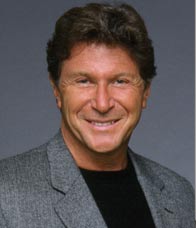|
Interview with Ken Dychtwald on Midlife Crisis
February 2009 - By Dr. Nagendra V Chowdary
 Ken Dychtwald
Ken DychtwaldKen Dychtwald, founding president and CEO of Age Wave 
In our conversations with major US
corporations, we discovered that
while most companies were aware of
these impending demographic transformations,
few had developed the
necessary know-how and strategies
to prepare for an aging workforce. An
increasingly diverse workforce requires
tailored compensation, benefits,
management styles, and work
arrangements to meet the needs of
distinct, targeted workforce segments.
The New Employee/Employer Equation
Study, conducted by Age Wave
in collaboration with the Concours Group and Harris Interactive, was a
landmark study to develop a deeper
understanding and
|
|
superior segmentation
of the American workforce.
The massive study included interviews
with 7,718 adult employees,
and was designed to empower companies
with landmark insights into
the attitudes and needs of all generations
of workers.Many of the insights
from this proprietary research can be
found in Workforce Crisis: How to
Beat the Coming Shortage of Skills
and Talent written by myself, Bob
Morrison and Tamara Erickson
(Harvard Business School Press). -
Who are midcareer employees?
What are their unique/typical behavioral
characteristics?
In terms of demographics, life stage,
and career stage, midcareer workers –
those between the ages of 35 and 54 –
are, naturally, in between the extremes
of the younger and older cohorts.
Many are well educated, and in
the US are twice as likely as their parents
to earn high school and college
degrees. In the US this cohort is 76%
non-Hispanic white (versus 61% for
the young cohort and 88%for themature).
Perhaps most significantly, this
cohort is gender diverse. The boomers were the first real industrialage
generation of working women,
with 80% choosing to work outside
the home for reasons other than the
extraordinary circumstances of war.
Having come of age in the 1960s and
1970s– a time of global social upheaval
– this cohort is cause oriented.
Midcareers prefer to see the big picture
and think in terms of a life’s mission.
The assassinations of Dr. Martin
Luther King Jr., John F. Kennedy,
Robert F. Kennedy, and Malcolm X,
as well as the civil rights movement,
women’s liberation, and antiwar protests,
sparked the desire to do something
meaningful with their lives.
Thus, they hope to embrace the vision,
mission, and ambition of their
companies. Ambitious, idealistic,
self-reliant, and competitive, they
want to prove their worth, and so expect
clear rules of performance measurement,
focusing on both individual
and group merit.
Unlike today’s youth, this cohort did
not “grow up digital,” though it witnessed
the advent of space exploration.
The older ones were among the
last to take their mathematics and engineering
exams with slide rules
rather than personal computers or
even handheld calculators. Yet, they
have learned to apply information
technology quite cleverly throughout
their careers, pioneering such methods
as business reengineering to reshape
how corporations work.
Among their strengths, today’s
midcareer workers are motivated,
flexible, and people oriented. Their
accumulated experience and knowledge
are valuable, and they havemore
soft skills and customer-service orientation
than the younger cohort.
Among their potential weaknesses
are a distrust of leadership and tendency
to be self-absorbed.
The New Employee/Employer Equation
Study revealed that midcareer
workers’ average tenure is ten years,
but that number can be deceiving:
42% have been with their employers
for five years or less, and 39% for
more than ten. One in four has supervisory
or managerial responsibility,
and among those, one in three is a
midlevel or seniormanager.While the
preponderance are employed by forprofit
enterprises, this cohort is the
most likely (27%) to work in some
form of government service (including
government provided education
and health care).
Midcareer employees work longer
hours than other generations of workers,
yet just 33% feel energized by
their work, 36% say they feel that
they are in dead-end jobs, and more
than 40% report feelings of burnout.
Midcareer employees are the least
likely to say that their workplace is
congenial and fun and that it offers
ample opportunity to try new things.
They have the lowest satisfaction
rates with their immediate managers
and the least confidence in top executives.
Only one in three agrees that
top management displays integrity or
commitment to employee development,
and one in four often disagrees
with the organization’s policies on
important employee matters. A fifth
are seeking opportunities in other organizations,
and a similar percentage
are looking for a major career change.
But 85% believe that career changes
are very difficult these days.
Family and financial pressures outside
work make them conservative in
their career choices, andmany cannot
afford moves that would involve cuts
in pay or benefits. In short, far too
many midcareer employees are workingmore,
enjoying it less, and looking
for alternatives.
1.
Coca-Cola's Belgian Crisis Case Study
2. ICMR
Case Collection
3.
Case Study Volumes
|
